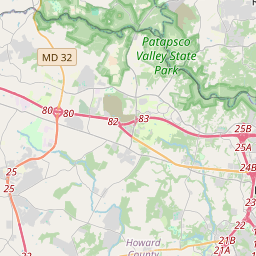The Great Baltimore Oyster Partnership
Historical marker location:
Pier 3, Inner Harbor, Maryland
( Marker is on East Pratt Street west of South Gay Street, on the right when traveling east.)







© OpenStreetMap contributors
Loading...
Searching for other points of interest within 3 miles of this location.Maryland was the first state to pass a law requiring free public education: In 1827, Maryland became the first state to pass a law requiring free public education for all children. The law was initially aimed at poor children, but eventually expanded to include all children regardless of their economic status.
About Baltimore County
Baltimore County Timeline
Baltimore County, Maryland has a rich history that dates back to the early 17th century. It was established in 1659 as one of the original counties in the colony of Maryland. The area was initially settled by English colonists, who developed tobacco plantations with the help of enslaved Africans. The county's economy thrived on agricultural production, with farms becoming a predominant feature of the landscape.
During the American Revolutionary War, Baltimore County played a significant role in supporting the war effort. It served as a key transportation hub, with roads connecting the county's towns and villages to Baltimore City and other regions. The county's early industries included flour milling, ironworking, and shipbuilding, which contributed to its growth and prosperity in the 18th and 19th centuries.
In the 19th century, Baltimore County experienced industrialization, driven by the growth of Baltimore City. The construction of railways and the expansion of the Baltimore and Ohio Railroad facilitated commerce and trade in the county. This period also saw the development of mill towns such as Catonsville and Dundalk, attracting a diverse workforce. The county was also home to notable historical figures like Frederick Douglass, who was born and enslaved in Talbot County.
In the 20th century, Baltimore County continued to grow and diversify its economy. The county experienced suburbanization as residents sought more space outside of the city, leading to the growth of residential communities and the establishment of suburban shopping centers. Today, Baltimore County is a vibrant and diverse area, known for its charming towns, cultural attractions, and natural landscapes, while preserving its historical heritage.
During the American Revolutionary War, Baltimore County played a significant role in supporting the war effort. It served as a key transportation hub, with roads connecting the county's towns and villages to Baltimore City and other regions. The county's early industries included flour milling, ironworking, and shipbuilding, which contributed to its growth and prosperity in the 18th and 19th centuries.
In the 19th century, Baltimore County experienced industrialization, driven by the growth of Baltimore City. The construction of railways and the expansion of the Baltimore and Ohio Railroad facilitated commerce and trade in the county. This period also saw the development of mill towns such as Catonsville and Dundalk, attracting a diverse workforce. The county was also home to notable historical figures like Frederick Douglass, who was born and enslaved in Talbot County.
In the 20th century, Baltimore County continued to grow and diversify its economy. The county experienced suburbanization as residents sought more space outside of the city, leading to the growth of residential communities and the establishment of suburban shopping centers. Today, Baltimore County is a vibrant and diverse area, known for its charming towns, cultural attractions, and natural landscapes, while preserving its historical heritage.
Baltimore County Timeline
This timeline provides a concise overview of the key events in the history of Baltimore County, Maryland.
- 1608: Captain John Smith explored the Chesapeake Bay and encountered Native American tribes in the Baltimore County area.
- 1661: Baltimore County was established as one of the original counties in the province of Maryland.
- 1674: The town of Joppa became the county seat.
- 1692: The county seat was moved to Baltimore, which was designated as a port of entry.
- 1729: The part of Baltimore County that is now Harford County was split off.
- 1768: Baltimore Town was incorporated as a city.
- 1777: Baltimore County became a part of the new independent state of Maryland.
- 1851: The Maryland State Fair, now known as the Maryland State Fair & Agricultural Society of Baltimore County, was first held in Timonium.
- 1854: Baltimore County was divided into three new counties - Baltimore County, Carroll County, and Howard County.
- 1931: Baltimore City and Baltimore County's governance was separated.
- 1974: The Carroll County portion of Baltimore County was split off to become a separate county.